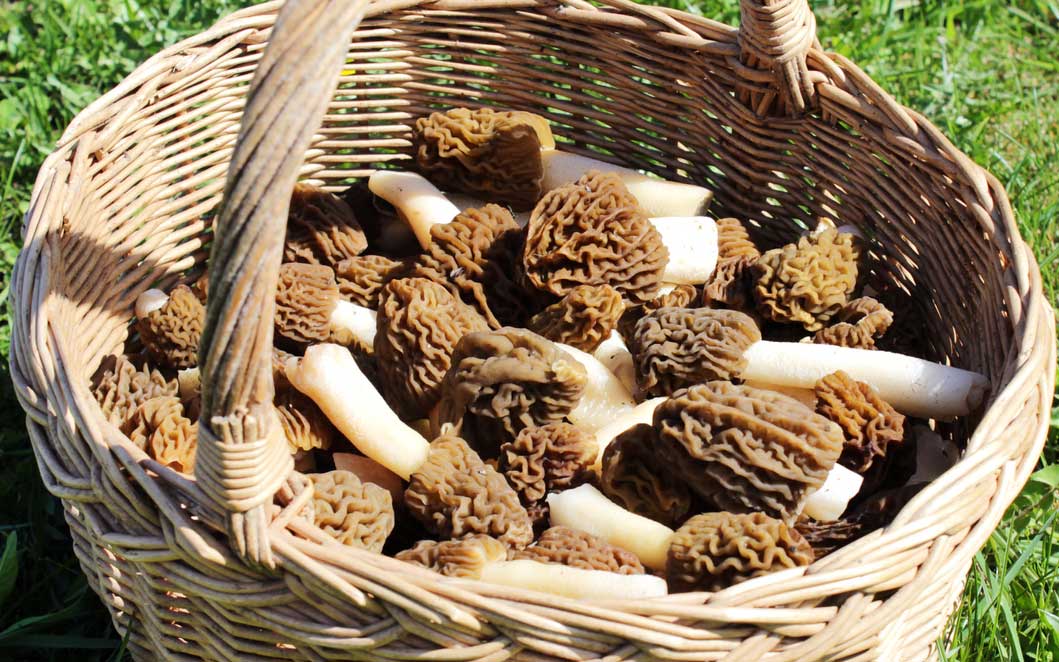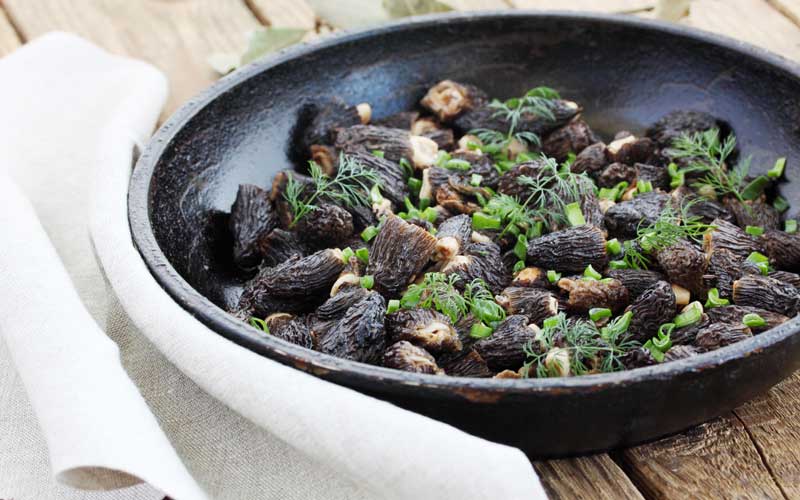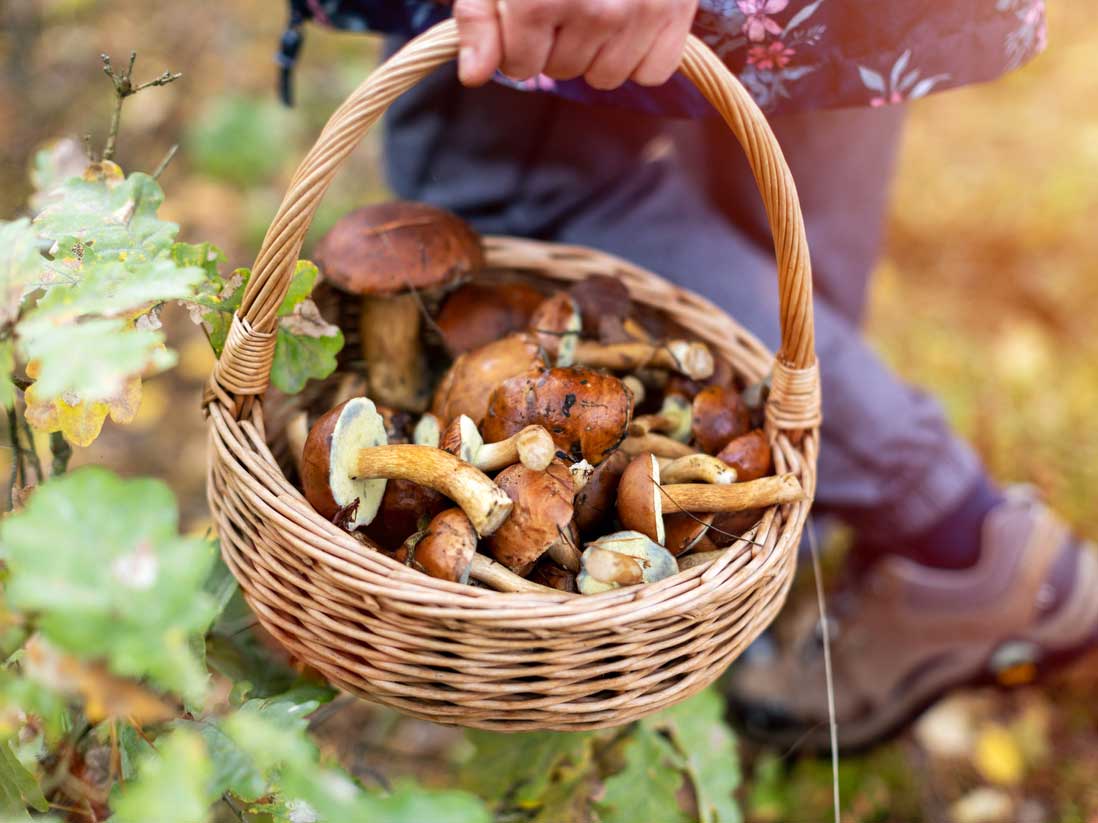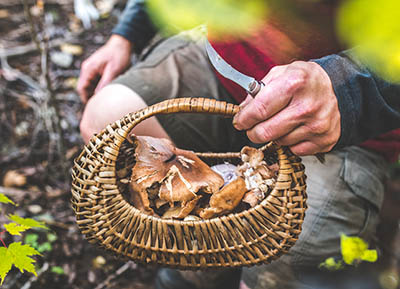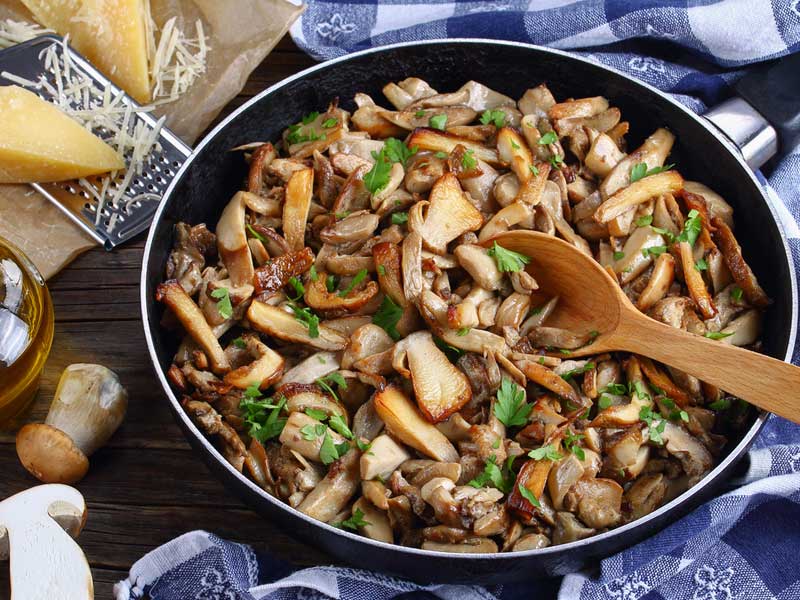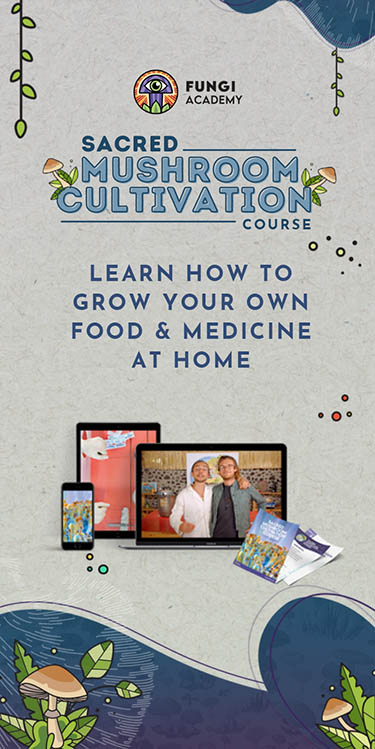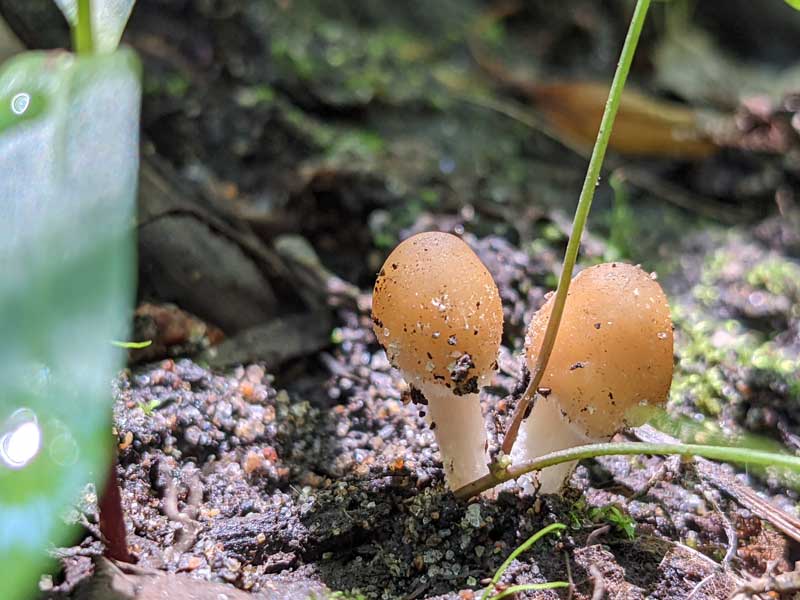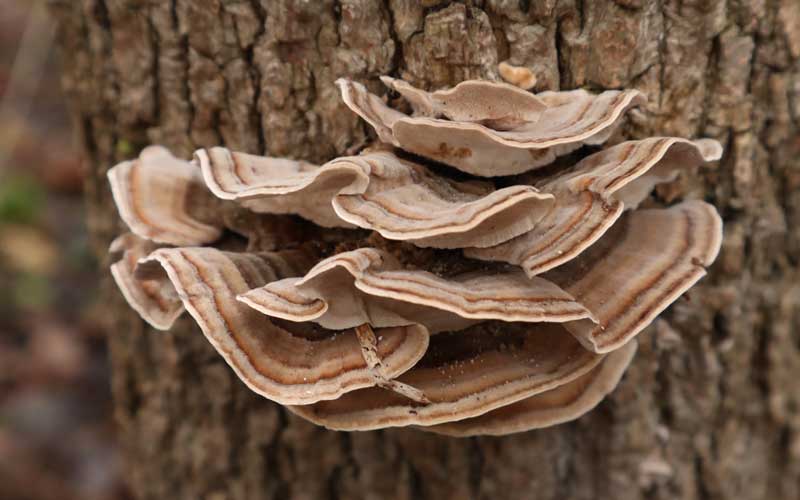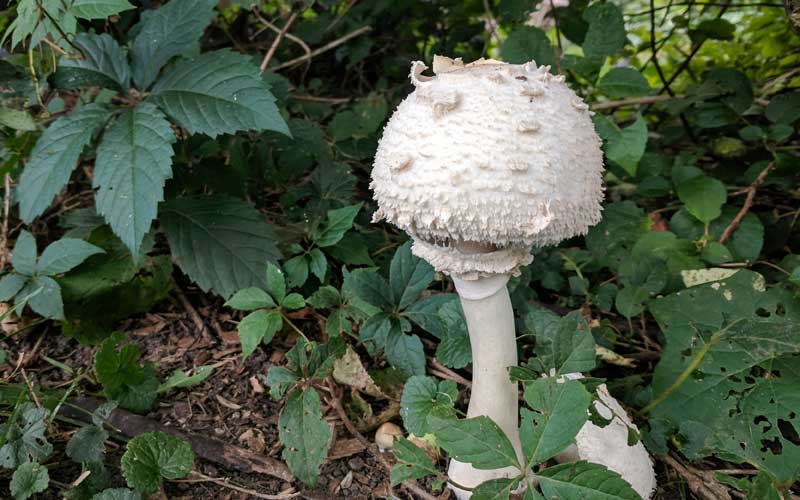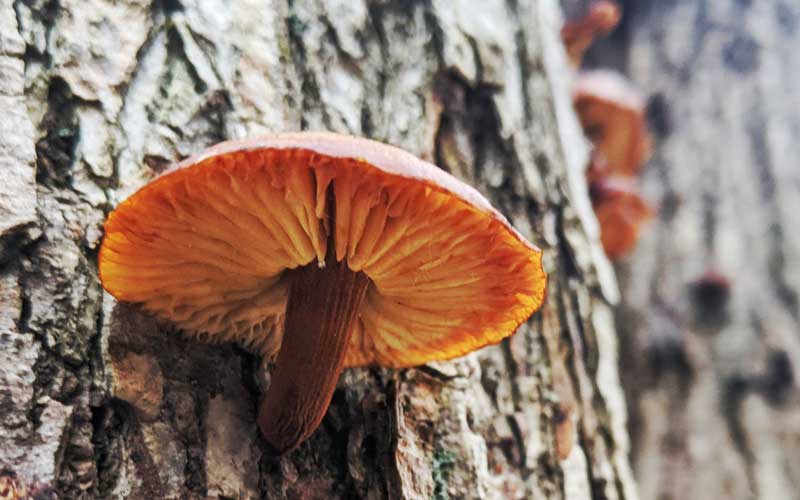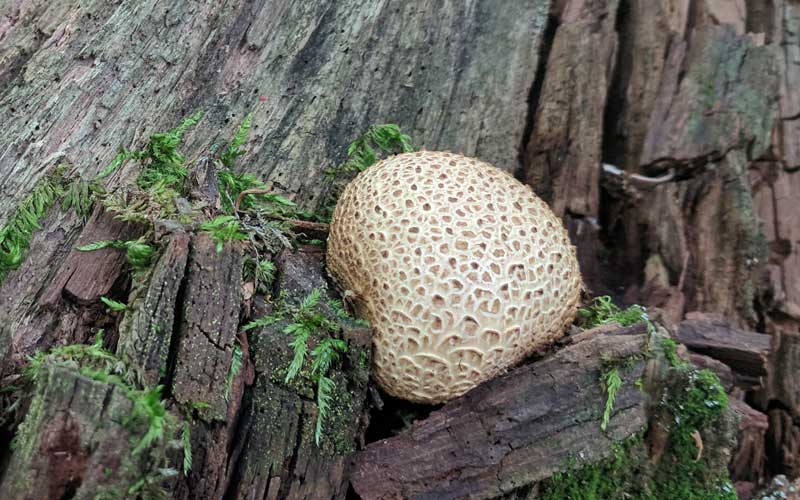- Home
- In the Kitchen
- Morel Mushrooms
Foraging for Morel Mushrooms – Let the hunt begin!
It’s an annual springtime adventure.
All across Canada, the United States, Europe, and Asia, people are beginning to forage for Morel mushrooms.
Morel mushrooms are elusive. The grow in shady spots around trees… often elm, oak, ash, poplar, and sycamore trees. Keep an eye on the ground around pine trees, too. You might spy some morels there.
These popular mushrooms tend to favor growing around the base of dead or dying trees. You can also look along forest streams. They won’t grow in the soggy soil, but in the cool places a few feet from the bank, you might have some luck.
Morel mushrooms also seem to sprout up where the soil has been disturbed recently. If there’s an area that had a forest fire two or three years ago, it may have a bumper crop of Morels this season. Check along lightly used trails, inside abandoned orchards, and where trees have been harvested.
You don’t need to venture deep into the forest to find Morels. Often, they grow best on the edges of woodlands. You might even find a few growing in your local parks and natural areas!
The thing with Morels is they come naturally camouflaged. They look a lot like a rock, a clump of dirt, or a pinecone. If you want to find them, you have to be patient and willing to get low to the ground.
The good news is, if you do find a Morel or two, chances are there are more nearby. Search the surrounding area carefully and odds are you’ll add to your haul.
The one place you won’t find Morels (usually) is at your local grocery store. Morels are difficult to cultivate, so unless you forage for them or know someone who does, you might not get the chance to enjoy these tasty treats.
Morel hunting brings families and friends together.
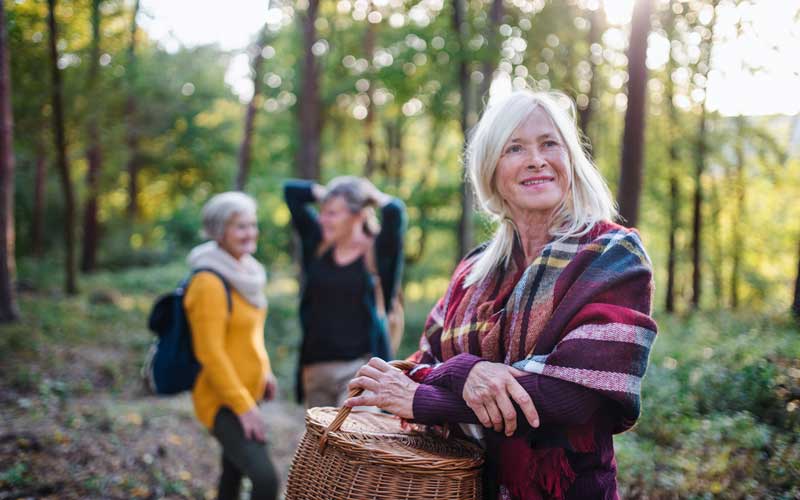
Now, you may be wondering why people spend entire days, eyes to the ground, excited to find even a few of these wrinkly little fungi.
Of course there’s the novelty and the promise of an extra special meal at the end of the day.
But even more important is the simple fun of foraging.
The Great Morel — a website dedicated to Morels — has an entire page dedicated to people’s foraging stories.
You’ll find a story there about a family that has been foraging together for generations. Each spring, whoever finds the first Morels packs them up and delivers them to their grandma — as a thank you for teaching them to love the annual ritual.
And another about a man who found so many Morels on one hillside in West Virginia that he had to take off his shirt to use as a makeshift basket.
If you’re thinking you’d like to make some of your own foraging memories, here’s what you need to know…
Morel season starts at different times depending on your location.
The mushrooms like the cool dampness of spring. They start to show themselves in places like California, Arkansas, and Tennessee in March. In April, people all through the Northeast and the upper Midwest begin to report sightings. Morels start to come on in April in the Pacific Northwest, the Mountain West, and Canada, too, but those areas tend to see more activity in May.
Morels grow best in soil that is 50 degrees or more (but not too much more). Start paying attention to nighttime temperatures. If the temperate at night has been above 50 degrees for a string of days, it’s time to plan a foraging trip.
Some years are better than others for Morels. Since Morels like moist soil, winters with a lot of rain or snow often lead to a good Morel season. And remember, Morels tend to pop up more in areas where the soil has been disturbed. Recent burns, areas that have been harvested for lumber, and even clear cuts often give you the best chance of finding Morels.
Early in the season, you’re more likely to find black Morels. These tend to be on the small side. They might be as small as a thimble or as big as your thumb. Later, you’ll find more yellow and gray Morels, which grow bigger — even as big as tennis ball.
Another reason to “hunt” Morels.
Foraging for wild mushrooms requires a certain expertise. If you’re not very familiar with the type of mushroom you’re gathering as well as potentially toxic imposters, you could wind up very sick.
Morels are a little different, though.
They’re easy for even beginning foragers to positively identify.
Morels have a wrinkly, honey-combed surface. Some people describe them as “brainy” looking. Others say they look more like a small pinecone on a stem. The stem of a Morel is white. And when you cut a Morel in half, both the cap and the stem are hollow.
The only mushroom you might mistake for a Morel is called a False Morel. It is toxic, so it’s important — but also easy — to know the differences.
While some describe Morels as “brainy” looking, False Morels are truly brain-esque. The are wavy and almost waxy looking while true Morels have pits and ridges.
The real giveaway is the stem. On a true Morel, the stem is attached to the bottom of the cap.
On a False Morel, the stem connects to the interior of the cap at the top (or sometimes half-way up). When cut in half, the False Morel stem is not hollow, but is filled with a cottony substance.
Since learning to the tell the differences between Morels and False Morels is straightforward, foraging for Morels is much safer than foraging for other wild mushrooms.
What to do with Morels when you find them.
You’ll probably want to eat some of your Morels right away. Gently brush away any grit or debris. Then slice up your mushrooms and sauté them in butter with salt and pepper. That’s one of the simplest serving suggestions, but these mushrooms are very versatile and can enhance many different meals.
Just remember to cook them. Morels do contain a mild toxin that breaks down when cooked. Cooked, they’re delicious and safe. Raw, they’ll give you an upset stomach. (Also, some people are allergic to Morels. If you’ve never eaten them before, just try one or two your first time around to make sure they agree with you.)
If you’re lucky enough to have more Morels than you can use in a sitting, you can store them for up to 10 days in the fridge. Or you can dry them using a food dehydrator.
However you use them, Morels are a delicious addition to your menu, made all the more so because of the effort you put into finding them.
Related Topics:
A beginner’s guide to wild mushroom foraging in the woods.
With patience and commonsense, you can learn to safely forage for wild mushrooms. Careful, though. You might get hooked! The full article...
Best Mushroom Foraging Tours in the United States
Taking a guided mushroom foraging tour is a great way to get started with foraging, or to explore new areas. The full article...
Original mushroom recipes shared by mushroom lovers from around the world
These mushroom recipes include home-cooked favorites, plus exotic dishes from famous chefs who love to cook with mushrooms. The recipes...
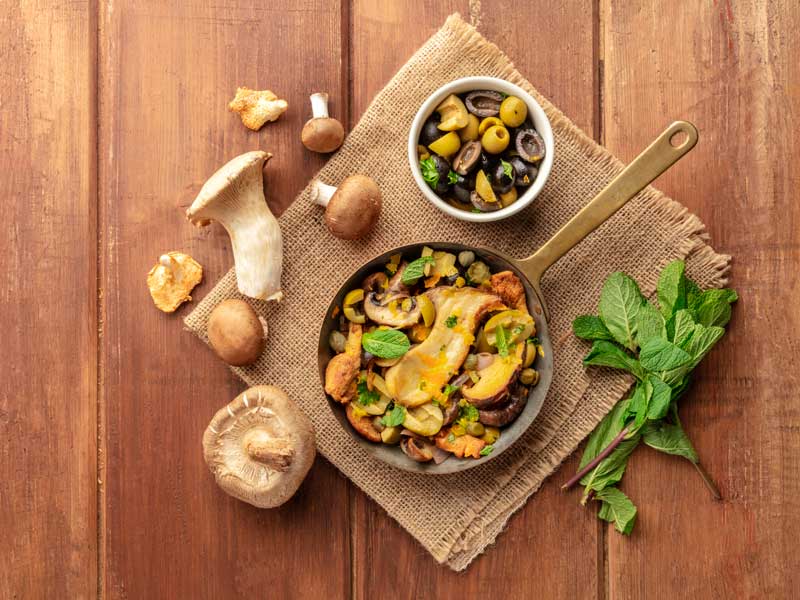
The nutritional value of mushrooms in your diet is greater than you think.
Mushrooms are dense with nutritional value and a variety of textures and flavors… including chicken, lobster and shrimp! Read the full article...
